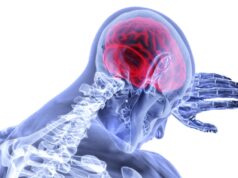 In a study published in The Journal of the American Medical Association (JAMA), researchers have found that stroke patients in Berlin for whom STEMOs (Stroke-Einsatz-Mobile) were dispatched were more likely to survive without long-term disability.
In a study published in The Journal of the American Medical Association (JAMA), researchers have found that stroke patients in Berlin for whom STEMOs (Stroke-Einsatz-Mobile) were dispatched were more likely to survive without long-term disability.
According to Charité – Universitätsmedizin Berlin, where the research was carried out, STEMOs are a special purpose emergency response vehicle designed to evaluate and treat patients with stroke. It is reported that vehicles are fitted with a computed tomography (CT) scanner, a small laboratory, and thrombolysis capabilities on board. Additionally, a STEMO is managed by a neurologist who is supported by a specially trained emergency response team. STEMOs were first launched in Berlin in 2011.
The study looked at 1,543 cases between February 2017 and October 2019. In 749 (49%) cases a mobile stroke unit was dispatched. If no STEMO was available at the time of the emergency call, only a conventional ambulance was dispatched to ensure transport to a specialist hospital. In 794 cases (51%), patients were cared for within the conventional emergency medical system. Using a standardised protocol, the researchers then determined survival at three months post-stroke and the extent of any neurological impairment affecting the patients.
Researchers found that a greater number of STEMO patients received thrombolysis, 60% vs. 48% in the non-STEMO group. Additionally, patients received thrombolysis on average 20 minutes earlier than in controls. They further found that after three months, approximately 7% of patients in the STEMO dispatch group had died, compared with 9% in the control group. Furthermore, while approximately 51% of patients in the STEMO group reported no stroke-related impairments in day-to-day functioning, the corresponding figure in the control group was only 42%.
“In our study, dispatch of a mobile stroke unit was linked to increased survival and reduced risk of disability,” says Heinrich J Audebert (Center for Stroke Research Berlin, Charité –Universitätsmedizin). He adds: “The relative odds of these patients having significant disabilities three months after stroke was 29% lower than in patients cared for by the conventional emergency medical services. STEMO dispatch therefore results in significantly more stroke patients returning to an independent life after stroke.”
Researchers note that clinical trials in other regions are warranted.














Await the statistical analysis. Sounds like an expensive system with significant profit involved. Why published in JAMA?